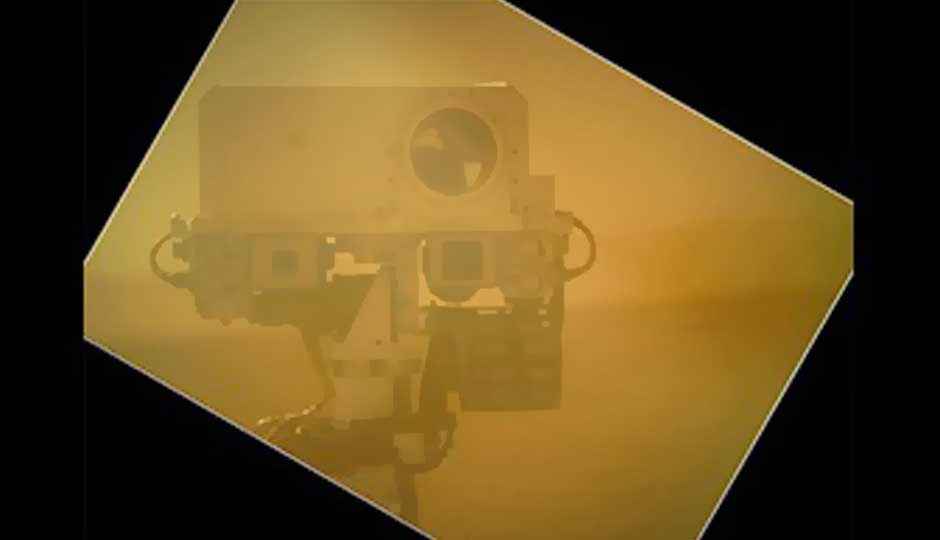Life on Mars? NASA teases ‘historic’ discovery by Curiosity

Little green men? A Buffalo nickel? The body of Jimmy Hoffa? Whatever the Curiosity rover’s “historic discovery” on Mars turns out to be, NASA is once again stirring up a ton of buzz for one of its most popular missions in recent memory.
 Survey
SurveyWhen Curiosity chief scientist John Grotzinger told NPR earlier this week that the Mars rover had found something that “is gonna be one for the history books,” most of the speculation centered around the possibility that the surface probe has discovered evidence of organic life on the Red Planet.
Perhaps, but we won’t know the answer until next month when NASA said it will spill the beans about the “historic” data from a recent Curiosity soil sample-collecting foray that the mission’s “science team is busily chewing away on,” as Grotzinger put it.
One thing’s for sure—the space agency that seemed on the verge of irrelevance in the public mind just a couple of years ago is back to playing the public relations game like nobody’s business.
NASA has been on a PR tear of late. The end of the storied space shuttle program was supposed to be depressing—for the first time in decades, the United States has no direct means for putting humans in space—but NASA turned lemons into lemonade with a series of triumphant final flybys for the members of its shuttle fleet on the way to their final homes in aerospace exhibits around the country.
While NASA currently relies on the Russian space agency to transport its astronauts to the International Space Station, it’s also taken the first steps in partnering with private space enterprises like SpaceX to usher in a new era of space travel where government and commercial ventures join forces to explore the stars together.
The agency’s planet-hunting Kepler space telescope has identified dozens of worlds orbiting distant stars that might have liquid water—and possibly life. NASA extended Kepler’s mission by another four years last week.
NASA is also reportedly on the verge of announcing an ambitious plan to build an orbiting Moon base that would serve as a launching pad for manned missions to near-Earth asteroids and Mars in the next decade.
Then there’s Curiosity. From the “seven minutes of terror” during the rover’s final descent to the Martian surface in August, as witnessed by millions on television through the eyes of the control team at NASA’s Jet Propulsion Laboratory (JPL) in Pasadena, Calif., to the sudden memetic fame of team member “Mohawk Guy,” the Curiosity mission has inspired a new wave of geeky fascination with the mechanics and technologies of space exploration.
Of course, it hasn’t all been a garden of roses for NASA. The future James Webb Space Telescope has become a bit of a boondoggle, going drastically over budget, with those cost overruns leading NASA to pull funding from the European Space Agency’s upcoming ExoMars missions. The revelation this year of numerous computer security breaches over the past several years has been a black eye for an agency supposedly at the forefront of technology.
Despite a few setbacks, today’s NASA is no longer defined by the tragic Challenger and Columbia shuttle disasters or the dwindling prestige of the Apollo program. Rather than the bureaucratic, legacy dinosaur the space agency appeared destined to become after putting the shuttle program to bed, NASA is showing that it’s as relevant and important to humankind’s exploration of the stars as ever, if in a different way than before.
To make an analogy with Star Trek, if the original Mercury and Apollo astronauts had all the sexiness and swagger of Captain Kirk, the JPL team is comprised of a bunch of even-keeled Jean-Luc Picards. You don’t get to Picard without Kirk to blaze that trail into the “final frontier,” but at the end of the day, it was the next generation that had the staying power.
8 Amazing images From the Curiosity Mars Rover


Shortly after landing, Curiosity’s front left Hazcam captured this image of its shadow in the foreground and its target destination, Mount Sharp, on the horizon.

On Sol 1, a term the MSL team uses to signify the first day of rover operations, Curiosity’s MAHLI took this initial color image with the camera’s protective dust covers still on. Through the haze, the northern wall and rim of Gale Crater are visible. At the time of capture, the rover’s robotic arm, where MAHLI sits, was in a stowed position and thus the image was rotated to correct orientation.


Made from images taken on Sol 2 by Curiosity’s Navcams, this mosaic shows the back of Curiosity to the left and two blast marks made by the descent stage’s rocket engines in the middle.

Part of Curiosity’s first color 360-degree panorama taken on Sol 3, this image shows blast marks from the rover’s descent in the middle and the slope of Mount Sharp in the upper left corner.


This picture, made up of a mosaic of 1,200-by-1,200-pixel images taken by the 34mm Mastcam on Sol 3, shows the wall of Gale Crater north of the landing site and behind the rover. For the first time, scientists can see a fluvial system on Mars and study sediment transportation. Future images taken with the Mastcam’s 100mm camera will provide more detailed insights of the area.
Copyright © 2010 Ziff Davis Publishing Holdings Inc
